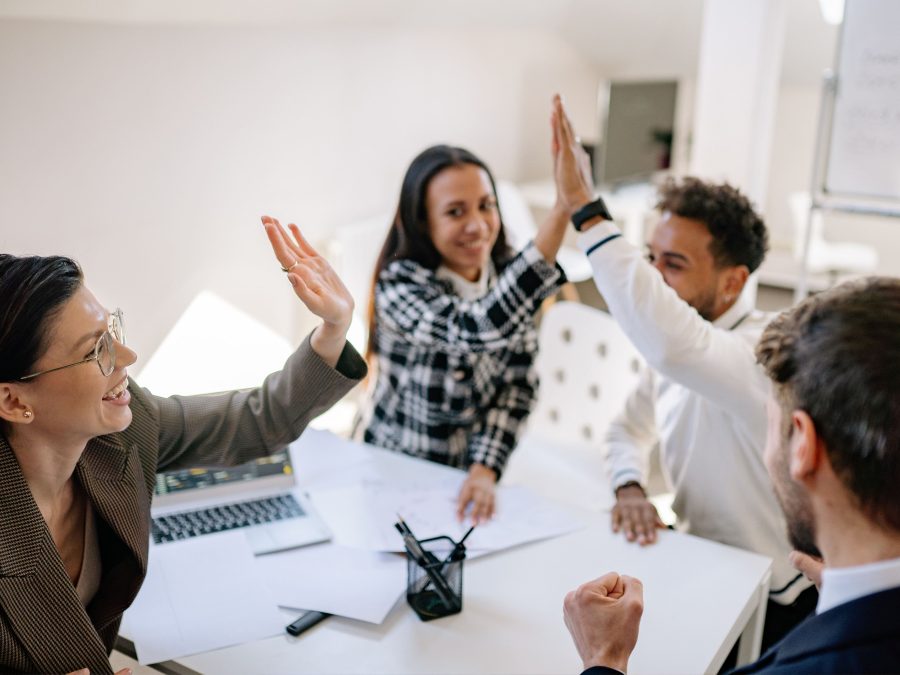Employee advocacy in the workplace – table of contents:
What is employee advocacy?
Employee advocacy is a marketing and communication strategy that involves engaging employees to promote the company (its products, services, values, activities, etc.) on social media sites and other communication channels. It assumes that employees are the company’s best ambassadors – they can talk about their experiences with the company authentically. Such opinions, thoughts, or reviews are more credible to potential customers, business partners, or job candidates than a message coming directly from the company. Thus, the immediate goal of employee advocacy is to leverage employees’ professional and personal networks to extend the brand’s reach and influence.
The benefits of implementing employee advocacy
What are the major benefits of implementing employee advocacy in the workplace? Let’s take a look at our short list:
- Building trust in the brand – which is only possible with the social proof provided by employees,
- Increasing brand awareness – by involving employees in the promotion of the company, published content and activities can reach a much wider audience than through corporate communication channels alone,
- Enhancing a company’s image – positive employee reviews that appear online can help improve a company’s image, which will not go unnoticed by current and potential stakeholders,
- Reducing employee turnover – being a brand ambassador can also motivate employees to stay with the company longer, increasing retention.
How to implement employee advocacy in the workplace?
It may seem that all you need to do to implement employee advocacy in your organization is to encourage your employees to get involved in such activities. Nothing could be further from the truth. In fact, you need a well-thought-out strategy. Follow the steps below:

Build an employee advocacy program
The first step is to identify the goals that your employees’ activities are intended to achieve (e.g., increasing brand awareness, recruiting new employees, attracting customers, etc.) and then develop a strategy to achieve those results. Decide which social media platforms will be used, what types of content will be promoted, and what guidelines will be given to employees (tone of voice, subject matter, etc.). Remember to include incentives in your program to keep your employees motivated.
Identify the right people
Not all of your employees will want to engage in such activities. Therefore, you should choose individuals who not only strongly identify with your company’s values and consider its successes as their own, but who are also willing to share work-related content with others (e.g., on their LinkedIn profile). Once you’ve selected individuals and gotten their consent, conduct a training session to explain the idea behind the process and give them tips on what content is worth sharing and what tone to maintain.
Provide support
Although you can’t do without the program and the right people, the third step should be the most important for you. After all, it is not enough to give your employees guidelines and then leave them alone – you should support them all the way. Therefore, assign a program coordinator who will help them:
- prepare extra materials (such as videos or graphics),
- come up with content ideas,
- review the created content,
- monitor the results and adjust the initial strategy.
Summary
Companies across industries sometimes face some obstacles when implementing employee advocacy programs, such as the inability to create engaging content or a lack of time. However, overcoming these problems is not impossible. Provide your employees with the right support, tools, and training, and keep them motivated using the strategies mentioned above. Then they will be more likely to participate in the program you create and help you with your communication activities to achieve the company’s goals.
If you like our content, join our busy bees community on Facebook, Twitter, LinkedIn, Instagram, YouTube, Pinterest, TikTok.
Author: Nicole Mankin
HR manager with an excellent ability to build a positive atmosphere and create a valuable environment for employees. She loves to see the potential of talented people and mobilize them to develop.


















